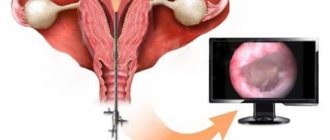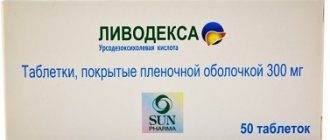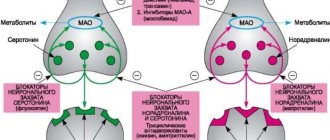Childbirth is the natural end of pregnancy, one of the signs of which is pain. This pain is the main cause of worries and fears among expectant mothers. Numerous worries on this topic are quite understandable, because during childbirth the intensity of pain is so great that it is impossible to forget it. And how difficult or easy it will be for a woman to give birth largely depends not only on her state of health at the time of childbirth, but also on her general psychological preparation for the end of pregnancy.
Many women are quite ready to courageously endure natural labor pains without the help of painkillers in order to reduce the risks for themselves and the child, considering the old-fashioned way of childbirth with anesthesia as dangerous, entailing complications. Others, on the contrary, despite contraindications for the procedure, are inclined to risk both themselves and the baby, just so that it does not hurt, and ask that they be given anesthesia during childbirth. There are cases when doctors comply with a woman’s request to use pain relief during childbirth only on the basis of her request, if she has a panicky fear of the upcoming painful process, because stress in the mother is harmful for the child. But if there are direct indications for anesthesia, and in such cases the issue is not discussed.
In what cases is anesthesia indicated during childbirth?
According to medical statistics, a quarter of expectant mothers experience severe pain during childbirth, and only 10% of women who have already given birth characterize the pain as tolerable.
Modern methods of anesthesia provide relief and even relief from labor pain. The use of synthetic medications during labor is undesirable, as this can have a detrimental effect on the baby’s health. Some types of anesthesia are considered relatively safe, while the use of others carries a risk of complications.
Pain relief during labor
is not indicated for all women. Only a doctor can decide whether it is necessary in a particular situation.
Labor pain is considered a subjective sensation and occurs due to:
- irritation of receptors during dilatation of the cervix;
- contractions;
- tension of the uterosacral ligaments;
- poor circulation.
Anesthesia is prescribed as planned (before childbirth) or according to circumstances (during the birth). Anesthesia is carried out strictly for medical reasons, namely for:
- prolonged labor (from 10 hours);
- incorrect position of the fetus;
- gestosis;
- psychoemotional disorder due to prolonged severe pain;
- cervical dystocia (due to excessive tissue stretching);
- incoordination of contractions (intense contractions of the uterus);
- pathologies of the cardiovascular system, including hypertension;
- diabetes mellitus;
- diseases of the respiratory system.
Anesthesia is used during caesarean section, when the mother is too young, when the baby is large, and also during multiple pregnancies.
Most women want to give birth with anesthesia, even when there is no indication for it. Any anesthesia is associated with the risk of complications, and during normal labor such an intervention in the body is undesirable.
To anesthetize or not?
On the question of whether anesthesia is needed to relieve pain during childbirth, society is divided into two camps - “for” and “against”. Experts agreed that anesthesia brings undeniable benefits with a competent approach. Like any medical procedure, anesthesia can cause unpleasant consequences for both the mother and the child, so anesthesia should not be used whenever and however you want. You should resort to medicinal methods of getting rid of pain when a woman is obviously in a lot of pain, as well as when there are other specific indications. In the case when childbirth proceeds normally, without complications, then the possible risk from pain relief is unjustified. The doctor must compare the risks, carefully weigh the pros and cons, and make a decision on how to give birth based on each specific situation.
(Ratings: 1 , average: 5.00 )
Types of pain relief
Anesthesia for natural childbirth can be without the use of drugs or medicated. The first group includes: massage, breathing exercises, hydrotherapy, as well as transcutaneous electroanalgesia and psychotherapy. The second type includes:
- spinal anesthesia;
- inhalation anesthesia;
- administration of analgesics intravenously or intramuscularly;
- epidural anesthesia;
- paracervical analgesia.
Each method has indications and limitations for use, as well as pros and cons. Only a doctor can prescribe pain relief during childbirth.
Non-drug methods
These types of anesthesia do not have a pronounced effect. They are not able to eliminate all unpleasant sensations during childbirth, but only provide relaxation during contractions. The main advantage of physiological methods is absolute safety.
Massage
The technique minimizes discomfort and pain during childbirth. You can learn relaxing massage through courses. It will help make you feel better and improve blood circulation.
The main techniques are stroking the abdomen,
lumbar region , and pressing on points that are located parallel to the spinal column.
Breathing exercises
Proper breathing is considered equally important for minimizing pain and preventing fetal hypoxia during childbirth. During contractions, it is recommended to take a deep breath through your nose, and then exhale slowly through your mouth. When uterine contractions become prolonged and the intervals between them become shorter, you need to breathe through your mouth, often. Such non-drug pain relief has one drawback - not every woman has the strength to do it.
Hydrotherapy
Taking a bath or hot shower provides muscle relaxation and minimizes discomfort. But such services are not provided by all government clinics, and it is not always possible to give birth in a paid institution. However, if contractions start at home, this method of pain relief during childbirth will be very useful.
Before the ambulance arrives, it is recommended to take a shower or warm bath. This method is advisable when the amniotic fluid has not yet receded.
Transcutaneous electroanalgesia
An effective and harmless type of anesthesia that helps relieve pain from contractions. The technique consists of using a special apparatus with electrodes. The device's sensors are attached to the woman's lower back. Then the pulses are fired. The method ensures blocking of the transmission of pain stimuli in the roots of the spinal cord, normalizes blood circulation and prevents the risk of fetal hypoxia.
Psychotherapy
Preparation for childbirth begins in the antenatal clinic at “schools for mothers” and ends several weeks before the baby arrives. Psychoprophylaxis consists of explaining the basic mechanisms of the birth process, warning the expectant mother about what she should expect, teaching relaxation techniques and breathing during contractions. Obstetricians conduct lectures and discussions.
A woman in labor can also consult a psychotherapist and minimize unpleasant sensations with the help of hypnosis. The technique eliminates fear and provides a positive attitude towards the upcoming event.
If the use of these measures turns out to be ineffective, then medicinal methods are used.
Drug pain relief
This type involves the use of fast-acting chemicals. Medicines relieve pain, but each of the modern methods of pain relief has its drawbacks.
Inhalation anesthesia
Mask anesthesia provides loss of pain sensitivity due to inhalation of gaseous narcotic substances. For this purpose, nitrous oxide or inhalational anesthetics are used: Pentran, Ftorotan, Methoxyflurane.
The woman in labor puts the mask on her face and breathes in the gas. The frequency of inhalations is determined by the scheme selected by the doctor. There are three options:
- between contractions;
- only when the uterus contracts;
- every 30 minutes.
The technique, also called self-anesthesia or autoanalgesia, is used in the first labor period (when the cervix is dilated by 4–5 cm). The advantages of the method include an immediate analgesic effect, relative harmlessness to the child, prevention of fetal hypoxia, as well as rapid removal of the active components of the gas from the body.
But inhalation anesthesia during childbirth also has a drawback - side effects. The use of this method is associated with the risk of dizziness, nausea and vomiting. Tachycardia, confusion, and breathing problems may also occur.
Today, this method is used more often in the third stage of labor, when it is necessary to examine the birth canal or carry out some additional measures.
Intravenous and intramuscular injections
The technique consists of administering narcotic drugs - Fentanyl, Promedol, analgesics (Baralgina, Analgin), antispasmodics (No-shpa, Drotaverine), tranquilizers or sedatives (Relanium, Elenium, Nalbufin). Intramuscular and intravenous anesthesia increases the pain threshold.
Ketamine, Calypsol, and Sombrevin are rarely prescribed. These are instant-acting drugs. But they can cause unwanted reactions.
The advantages of the technique include an analgesic effect and rapid elimination from the body. Disadvantages of anesthesia:
- possible harmful effects on the child of some medications;
- short action;
- a large list of side effects.
The use of injections is fraught with dyspeptic disorders, headaches, and fainting conditions.
Epidural anesthesia
One of the most effective medicinal methods of pain relief. Its essence lies in the introduction, using a special catheter, into the epidural space (at the level of the lumbar spinal column) of an anesthetic: Lidocaine, Novocaine or Ropivacaine. This type of anesthesia provides blocking of the nerve roots of the spinal cord, after which a pain-relieving effect occurs after 15 minutes. The catheter is not removed during the entire period of labor, thanks to which the drug can be added.
The procedure is carried out either from the very beginning of contractions (when the cervix is opened by 1–2 cm), or during active labor (up to 5 cm). If the dilation is more than 6 cm, epidural anesthesia is not started, as this is fraught with the rapid completion of labor with a high probability of injury to the woman in labor and the fetus.
To carry out the procedure, the woman is asked to lie on her left side, press her legs towards her and her head to her chest. Also, puncture of the epidural space is sometimes performed in a sitting position. In this case, the woman in labor arches her back back, and presses her head and legs towards herself.
The advantages of the technique include:
- remaining fully conscious;
- elimination of discoordinated labor;
- no negative effect on the fetus;
- stability of the heart of a woman in labor.
The advantages of the pain relief method include a pronounced effect and the possibility of administering additional doses, acceleration of labor (this is very important if a woman has diabetes, hypertension or gestosis), and also a decrease in blood pressure.
Disadvantages of epidural pain relief:
- not immediate effect (after 15–30 minutes);
- side effects.
The use of the technique is fraught with: allergic reactions, damage to nerve endings (rarely), fainting, muscle tremors, complete numbness of the legs during childbirth. This should include headache on the second or third day and discomfort at the catheter insertion site.
Spinal anesthesia
Prescribed for planned or emergency caesarean section. This method differs from epidural drug administration in that the drug is directed into the subarachnoid space itself, which leads to deeper anesthesia and loss of all types of sensitivity at the level of the puncture. The medications used in both cases are the same.
This method requires a highly qualified anesthesiologist. Even the slightest mistake is fraught with irreversible consequences. Advantages of this type of anesthesia during childbirth:
- instant action (after 3 minutes);
- no harmful effects on the baby;
- using a small amount of the drug.
Disadvantages: short-term effect (no more than 2 hours), side effects (lowering blood pressure, headache). During the procedure, the woman in labor loses pain sensitivity, but at the same time the ability to move the lower half of her body.
Paracervical anesthesia
An outdated method of labor pain relief, in which an analgesic (Novocaine, Lidocaine) is injected into the lateral vaults of the vagina. The manipulation is performed at the beginning of contractions. Provides blocking of nerve endings and pain reduction.
Pose
The correct posture and movements of a woman during childbirth are very important, which allow the woman to use gravity to reduce pain in the uterus. When a woman squats, stands or walks, uterine contractions become stronger and more intense, which leads to more efficient use of contractions and, as a result, faster delivery.
The advantage of non-drug methods of pain relief during childbirth is that they have no side effects and the woman can use them independently. An important advantage of using these methods is the reduction in the dose of medications used for pain relief.
ALSO INTERESTING TO READ: What procedures are possible for pregnant women
But there are also disadvantages of non-drug pain relief! These methods do not directly affect the reduction of pain, but only distract women from pain. As a result, the pain is simply easier to bear. Also, relaxation and breathing methods must be specifically studied and applied during childbirth.
There are also various alternative methods of pain relief during childbirth, such as acupuncture, acupressure, aromatherapy, homeopathy, reflexology, hypnosis, osteopathic methods.
What type of anesthesia is used after childbirth
Labor is divided into three stages: contractions, expulsion of the fetus, and release of the placenta. Cases in medical practice when the last stage is complicated are not uncommon. If the placenta is not separated in the usual way, it is removed manually.
In such a situation, you cannot do without pain relief. If epidural anesthesia was used during childbirth, an additional dose of medication is indicated to prolong the effect. When using other methods, intravenous administration of an anesthetic is prescribed. The woman then falls asleep and does not feel pain.
A common occurrence during childbirth is rupture of the perineum and vaginal walls. This is another indication for the use of local anesthesia.
How does natural childbirth work with an epidural?
The whole process (uterine contractions, cervical opening, fetal advancement) after such anesthesia does not differ from normal childbirth. However, childbirth with epidural anesthesia is somewhat faster. The effectiveness of pain relief and, in general, the course of the entire procedure is difficult to predict, since it largely depends on the individual characteristics of the woman. some report only dulling of pain, others – complete pain relief, and some do not feel a difference at all.
We recommend reading about pneumonia after childbirth. From the article you will learn about the dangers of pneumonia for a young mother, the causes and symptoms, diagnosis and treatment of pneumonia after childbirth. And here is more information about the causes of adhesions after cesarean section.
Epidural anesthesia during childbirth is a modern and safe method of pain relief, which is accompanied by a number of therapeutic effects. It is widely used in developed countries, but in Russia it is often performed only when indicated. An epidural is safe for the baby, shortens the duration of labor and allows for natural childbirth in women with serious illnesses.
In what cases is anesthesia not recommended?
Each technique has limitations. They must be taken into account and the potential risk to the mother and fetus assessed. Contraindications for medicinal anesthesia are listed below.
Table - Restrictions on drug anesthesia during childbirth
| Type of pain relief | Contraindications |
| Epidural anesthesia |
|
| Spinal pain relief |
|
| Inhalation anesthesia |
|
| Paracervical anesthesia |
|
| Injections IM, IV |
|
Contraindications
If there are contraindications for anesthesia, the woman in labor will have to endure it, even if it is very painful, or the doctor will use other methods of pain relief so as not to provoke complications and consequences:
- damage to the skin of the back at the site of a potential injection (in this case it is impossible to inject into the spine);
- poor blood clotting;
- increased intracranial pressure;
- low platelet count;
- severe deformation (the spine has defects, slight curvature) at the injection site;
- intolerance to anesthetics;
- likelihood of obstetric bleeding;
- refusal;
- unconsciousness during childbirth (most likely, a caesarean section will be performed under anesthesia);
- neurological problems, mental disorders of the woman in labor.
These contraindications for epidural analgesia can cause serious complications if they are neglected.












